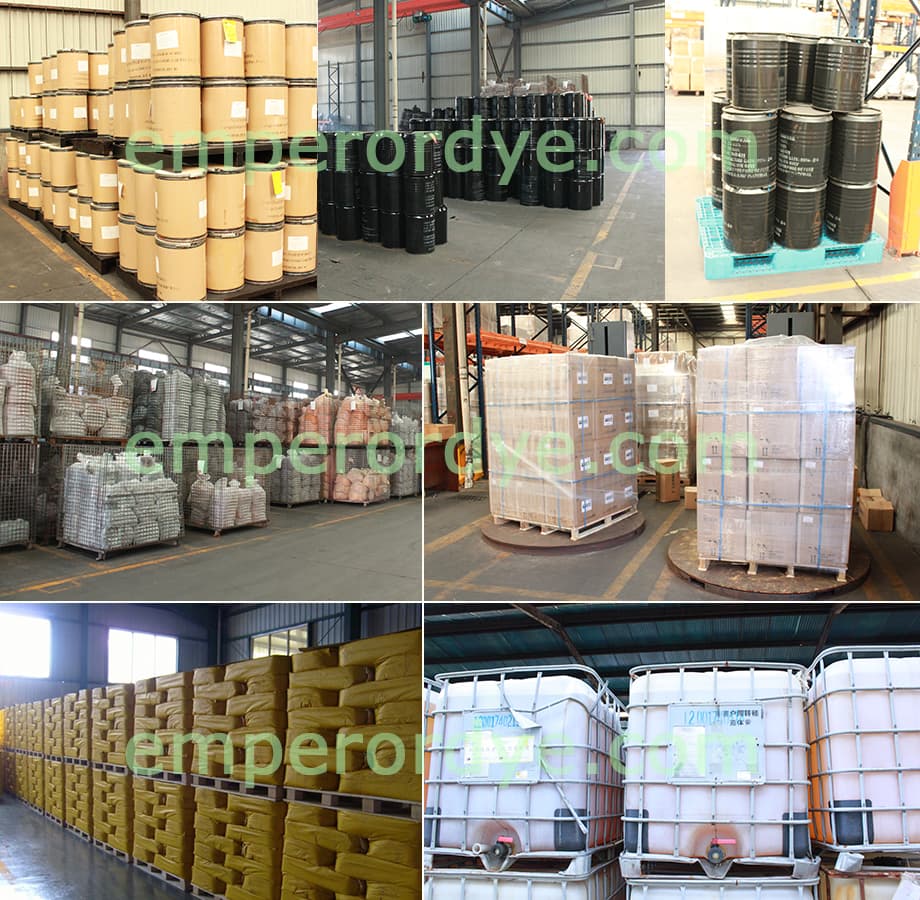Application and parameters of Direct Black 19
Direct Black 19
- TRADE NAME:
- Direct Light Fast Black G
- Direct Fast Black G
- Direct Light Fastness G
- Direct Black L 3BG
- Direct Fast BlackGU
- Direct Fast Black SA
- Direct Rayon Black KSG
- Formal Fast Black 2B
- Hispamin Fast Black CG
CAS NO: 6428-31-5
CI.NO: 35255
Direct Black 19 Physical and Chemical properties
| Dyeing depth % | 2 |
| Insolubles % | 0.15 |
| Light Fastness | 3 |
| Washing Fatness | 2 |
| Rubbing fastness(dry) | 4 |
| Rubbing fastness(wet) | 3 |
Colour Fastness Test
|
sun exposure |
soaping |
flooding |
perspiration |
rubbing |
ironing |
acid and alkali resistant |
|||||||
|
standard depth |
1/12 depth |
original color change |
white fiber stained |
original color change |
white fiber stained |
original color change |
white fiber stained |
dry |
wet |
sulfuric acid |
acetic acid |
soda ash |
|
|
5~6 |
— |
4~5 |
1 |
4 |
4~5 |
— |
— |
4 |
2 |
4~5 |
— |
— |
— |
Direct Black 19 (Direct Fast Black G) alias direct light fast black, direct fast black G. Appearance is generally black powder. Water soluble, soluble in water, greenish black, slightly soluble in alcohol and acetone. Dyes in concentrated sulfuric acid It is greenish black and black. It is reddish black after dilution. It is dark brown in concentrated nitric acid. Its aqueous solution is added with 10% sulfuric acid to become reddish, and concentrated sodium hydroxide is greenish blue. In case of copper ion light, it is slightly green. The iron ion shade changes slightly.
Direct Black 19 Application:
Used in viscose of dyeing and printing. In the cotton knitwear, blankets, flannelette, silk, viscose, silk that the fabric, wool/viscose fiber blend fabrics can be used. Can also be used in leather, paper and electrochemical aluminum color.
Use condition:
1. Direct Fast Black G dyed cotton or viscose fiber has green light black. Poor transferability, slow temperature rise and dyeing should be used to control dyeing to obtain uniform color. Good dyeing rate. The stage dyeing solution should be naturally cooled to 80 ° C, which is beneficial to the dye exhaustion. After dyeing, the color light is unchanged after finishing with urea-formaldehyde resin, and the wet processing fastness can also be improved.
2. Direct Black 19 is also used for dyeing and printing of silk, wool and cotton or viscose fiber interlaced or blended fabrics. When cotton, viscose and other fibers are dyed in the same bath, vinylon, silk and wool are colored. Lighter than cotton and viscose, nylon, polyester, acrylic, and diacetate are brownish yellow.
3. It can be mixed with disperse dyes at high temperature to dye polyester blended fabric. The dye bath is heated to 120 ° C under neutral conditions, or loaded with boiling dye. After the dye is dyed with polyester, the dye is cooled. Continue to dye for half an hour, so that the cellulose fibers are fully colored, causing the dye to be exhausted and the color light to change slightly.
4. Direct Black 19 can be used for continuous padding of cotton, steaming and drying at 100~103 °C for 1~3min.
5. It can be used for direct printing of cotton or viscose fabric, plus urea and disodium hydrogen phosphate to prepare color paste.
6. Direct Fast Black G is one of the main black direct dyes. It is widely used in dyeing and printing of viscose fabrics, mainly used for dyeing black. It is also used to form various kinds with brown dyes. Coffee of different depths, a small amount is used to adjust the color of light to increase the chromatogram. It is also used in the dyeing of cotton knitwear, carpet, flannel, etc. It can also be used for dyeing silk and viscose fiber and silk fabric, wool. It is blended with the viscose fiber on the black. It is also used for the dyeing of silk fabrics. The whitening performance is good, but the dark color is slightly worse.
Precautions
Direct Black 19 is not a banned dye. However, it should be noted that when the dye is synthesized, the diazonium ion of the p-nitroaniline is cleaved off under a basic condition, and then the self-coupling is 4,4'-dinitrobiphenyl. Finally, benzidine is produced.
Packing:

20 or 25kg/compound bag, carton box, iron drum, fiber durm for powder dye and 1000kg/tank for liquid dye
Direct Black 19 Material Safety Data Sheet (MSDS)
- Inquiry for Direct Black 19
- Question: *
- You can learn about other products:
- Direct Black 22
- Direct Violet 1
- Direct Violet 9
- Direct Violet 12
- Direct Green 6
- Direct Black 17
- Direct Brown 227
- Direct Brown 210
- Direct Brown 95
- Direct brown 2
Products Catalog
- solvent red 24
- solvent red 49
- solvent red 122
- solvent red 111
- solvent red 146
- solvent red 195
- solvent yellow 21
- solvent yellow 33
- solvent yellow 93
- solvent yellow 98
- solvent yellow 114
- solvent orange 60
- vat red 41
- solvent green 3
- solvent green 5
- solvent blue 70
- solvent blue 104
- solvent black 3
- solvent violet 31
- solvent violet 13
Copyright right HANGHZOU EMPEROR CHEMICAL CO,,LTD © 2019 All rights reserved.

 Pусский
Pусский